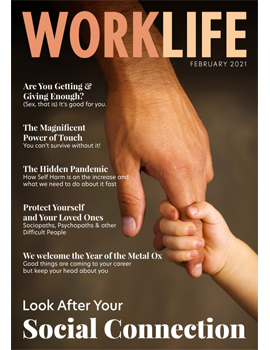Behavioral Health Disorders: Types, Causes, Symptoms, and Effects
Behavioral health disorders focus on daily habits, actions, and character traits that affect a person’s physical and mental health. They often involve a pattern of aggressive and disruptive actions that lasts longer than six months. They manifest in children, teenagers, and adults.
Several factors contribute to behavioral health problems. It could be changing schools, parents getting divorced, being bullied, etc. This often causes truancy, run-ins with the law, substance abuse, and mental health disorders like depression.
Malnutrition, genetics, and brain damage also cause behavioral health disorders. Adults dealing with this problem often have problems in their jobs and relationships. This article looks into behavioral health conditions, the types, causes, symptoms, and effects.

Types of Behavioral Health Disorders
There are different types of behavioral health disorders. They include:
- Anxiety disorders
- Disruptive behavioral disorders
- Dissociative disorders
- Pervasive developmental disorders
- Emotional disorders
We discuss examples of these conditions below.
Attention Deficit Hyperactivity Disorder (ADHD)
Attention deficit hyperactivity disorder is more common in children. According to a Centers for Disease Control and Prevention study, 6.9 million (9.4%) children have been diagnosed with ADHD. Adults also develop this ailment, especially if their ADHD was not diagnosed when they were young.
According to the Mayo Clinic, adult ADHD symptoms may not be as apparent as ADHD signs in children. However, if diagnosed with this condition, you’ll experience decreased hyperactivity and struggle with impulsiveness, restlessness, and difficulty paying attention.
The treatment for attention deficit hyperactivity disorder in children and older people is the same. It includes psychological counseling (psychotherapy), therapy and, potentially, medication.
Emotional Behavioral Disorder
This condition affects a person’s ability to be happy, control their emotions, and pay attention in school or at work. It manifests as:
- Inappropriate emotions or behaviors under normal circumstances
- Unhappiness and depression
- Learning difficulties without the impact of other health factors
Oppositional Defiant Disorder (ODD)
ODD is an ongoing pattern of rebellious, uncooperative, and hostile behavior towards authority figures. Children diagnosed with this ailment are usually spiteful and are always in trouble with authority figures.
Generally, an oppositional defiant disorder isn’t diagnosed in teenagers or adults. But children with undiagnosed and untreated ODD may manifest it in late adolescence and adulthood. While the known symptoms stay the same, adults with ODD might exhibit a lot of anger.
Anxiety
Ordinarily, anxiety is an emotion everyone feels at some point in their lives. However, it becomes a behavioral health condition when it affects how you live your daily life. For example, if anxiety causes insomnia and panic attacks and affects your ability to function at work or school, it is considered a behavioral disorder.
According to John Hopkins Medicine, approximately 18% of people ages 18-54 have an anxiety disorder in a given year. It includes:
- Panic disorder
- Obsessive-compulsive disorder (OCD)
- Post-traumatic stress disorder (PTSD)
- Generalized anxiety disorder (GAD), and
- Phobias (social phobia, agoraphobia, and specific phobia).
Anxiety disorders are severe and require accurate diagnosis and treatment.
What Causes Behavioral Health Disorders?

Behavioral disorders cannot be precisely identified with one factor. Instead, several environment and psychological elements influence it. The abnormal behavior associated with these conditions often have a biological, family, school, or work-related origin.
Some of these biological origins are:
- Physical illness or disability
- Malnutrition
- Trauma
- Brain damage
- Hereditary factors
Parents are more likely to have children with behavioral health conditions if they suffer from:
- Substance abuse
- Mood disorder
- ADHD
- Anti-social disorder, and
- Schizophrenia
- Stress
However, people with behavioral disorders may also come from families without a history of the disease. Therefore, it is crucial to identify the cause of a behavioral health problem. To do this, psychiatric, mental health, or medical professionals would conduct an extensive examination.
What Are the Symptoms of Behavioral Health Disorders?
Several signs indicate when a person has a behavioral health condition. They include but are not limited to the following:
- Hurting or threatening to harm themselves, other people, or animals
- Damaging or destroying their property
- Stealing or lying
- Not doing well in school or at work
- Substance abuse, e.g., drinking, drug use, or sexual addiction
- Constant loathing toward authority figures or the world
- Extreme shifts in conduct or character
- Having problem handling frustration or disappointment
- Frequent tempers and outbursts
- Feelings of despair
- Withdrawing socially and isolating from friends and family
- Intensive anxiousness or worries that hinder everyday activities
- Changes in weight, e.g. becoming anorexic or obese
- Changes in appetite
- Ignoring personal hygiene and appearance
- Easily getting irritated or agitated
- Frequently appearing angry
- Blaming others
While there are no physical symptoms of behavioral disorders, people suffering from this condition while addicted to harmful substances like drugs may show signs like a burnt fingerprint. They may also be shaking and have bloodshot eyes. If you notice any physical signs with a family member or friend, get them help.
What Are the Long-Term and Short-Term Effects of a Behavioral Disorder?

Failing to diagnose and treat behavioral health conditions on time may have short-term and long-term consequences. This affects a person’s personal and professional life. For instance, they may get into trouble for acting out.
Students may get suspended or expelled for fighting or lashing out against their teachers and other authority figures. Some children may have to switch schools and run out of options if the same problems continue. Similarly, adults may lose their jobs, and their marriages may fall apart due to strained relationships.
Adults may also have strained relationships with family, friends, and colleagues and cannot associate with other people. So, again, seeking help early is quite essential when dealing with behavioral disorders.
When Should You Seek Medical Help?
Firstly, we should point out that people with behavioral disorders, like most mental health patients, may not recognize they have a problem and will not seek help. This is common with people battling addictions, be it drugs, alcohol, or a gambling problem.
Therefore, it is often up to the people closest to them to show them how their character differs from what’s perceived as ‘normal’ and encourage them to get treatment. So, how do you recognize when it is time for an intervention?
As an individual, you should see a mental health professional if you are:
- Contemplating suicide
- Threatening others with violence
- Harming yourself or others
- Hallucinating or hearing voices
You should also see a doctor if you or a loved one exhibit one or more of the following behaviors:
- Cruelty to animals
- Criminal behavior
- Engaging in bullying and intimidating others or impulsive behaviors
- Withdrawing socially
- Exaggerated feelings of isolation
- Little or no interest in school or work
- Inability to function in relationships
Note that people with behavioral health issues usually feel different from others. As a result, they believe they don’t fit in and have emotions they can’t understand or identify. This ultimately leads to frustration and more behavioral problems.
How Is a Behavioral Disorder Diagnosed?
When you visit a medical health practitioner, the first thing they do is conduct a test to arrive at a diagnosis before commencing treatment. They will ask about your health history and listen to a description of your symptoms.
Some of the questions the doctor will ask includes:
- When did you start exhibiting this behavior?
- How long does the behavior last?
- How long has the behavior affected those around you?
- Did you recently experience any significant life changes, trauma, or transitions that could have triggered the behavior?
Ensure you answer these questions honestly. Unlike physical illnesses that show on imaging tests, behavioral health disorders cannot be diagnosed by conducting an X-ray or MRI test. So, the information you provide helps the doctor pinpoint the possible cause and arrive at a diagnosis.
How Is a Behavioral Health Disorder Treated?
There are different treatments available for behavioral health issues. This includes:
- Conflict Resolution Classes: Here, you learn how to find a peaceful solution to a disagreement. When a dispute arises, rather than lashing out, you negotiate until you find a solution.
- Counseling: It focuses on assuming that the environment determines an individual’s behavior. The counselor helps you deal with thoughts of suicide, addictions, family, marital problems, stress management, problems with self-esteem, etc.
- Group Therapy: Group therapy is the treatment of multiple patients at once by one or more healthcare providers. It is an effective treatment for externalizing behavioral problems, anxiety, and depression. It works best when members experience similar difficulties and function at similar levels, and you can combine it with individual psychotherapy.
- Medication: Although medication does not cure behavioral health disorders, it can help control and modify extreme behaviors. However, note that these medications have strong side effects.
Finally, if you are at risk of harming yourself or others, your doctor may recommend an inpatient stay at a hospital or treatment center.
Conclusion
A behavioral health disorder is not a death sentence. Many have gone onto lead successful and happy lives. It does not have to derail your life and ruin your relationships. Instead, speak to a qualified health practitioner and seek out a treatment plan tailored to you.

Peter Diaz is the CEO of Workplace Mental Health Institute. He’s an author and accredited mental health social worker with senior management experience. Having recovered from his own experience of bipolar depression, Peter is passionate about assisting organizations to address workplace mental health issues in a compassionate yet results-focussed way. He’s also a Dad, Husband, Trekkie and Thinker.






















